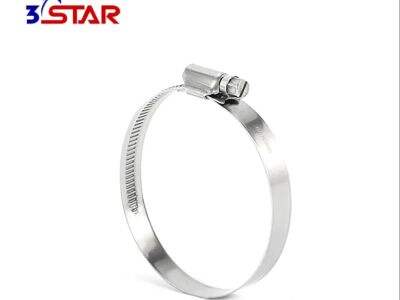Klamp selang mungkin terlihat seperti perangkat kecil dan cukup sederhana, tetapi perannya sangat penting dalam memastikan pipa dan selang tetap tersegel dengan baik. Cairan dan gas bisa bocor tanpa penggunaan klamp selang, yang akan menimbulkan banyak masalah. Dalam artikel ini, kita akan membahas klem selang otomatis , mempelajari cara kerjanya, apa yang menyebabkan masalah, serta mencari solusi untuk permasalahan tersebut.
Apa itu Klamp Selang?
Klem selang terdiri dari tiga elemen: sebuah band (biasanya terbuat dari baja tahan karat atau kadang bahan komposit), sekrup, dan rumah. Band adalah bagian berbentuk lingkaran yang dipasangkan mengelilingi selang atau pipa. Band dikencangkan dengan sekrup yang menjamin selang tetap terpasang kuat. Rumah merupakan tempat sekrup dipasang, dan di situlah Anda melakukan penyetelan. Semua bagian ini bekerja sama untuk menciptakan segel yang baik sehingga mencegah kebocoran.
Cara Mendapatkan Segel yang Kedap?
Untuk mendapatkan segel yang rapat dengan menggunakan klem selang, klem harus dipasang pada posisi yang tepat di selang atau pipa. Pastikan juga klem berada di atas sambungan dan band dikencangkan secara merata di sekeliling selang. Putar sekrup hingga klem pas rapat, namun tidak terlalu kencang, gunakan contohnya obeng. Dengan demikian, kebocoran dapat dicegah dan semua sistem akan berjalan lancar dengan segel yang baik penjepit selang fleksibel .
Masalah Umum dan Cara Mengatasinya
Salah satu masalah yang mungkin Anda alami dengan selang pengikat adalah terlalu kencang mengencangkan. Jika Anda mengencangkan terlalu keras, Anda dapat merusak selang atau pipa dan menyebabkan kebocoran. Hindari memutar baut terlalu jauh untuk mencegah hal ini. Namun, mengencangkan terlalu sedikit juga bisa menyebabkan kebocoran. Jika tali selang kecil terlalu longgar, itu tidak akan membentuk segel. Dalam kasus ini, cukup putar baut sedikit lebih jauh hingga pengikatnya menjadi kuat.
Pentingnya Memasang Mereka dengan Benar
Pemasangan yang benar sangat penting bagi kinerja yang baik dari selang pengikat. Saat memasang selang pengikat, bersihkan area di mana Anda akan meletakkan pengikat pada selang atau pipa. Ini membantu memberikan cengkeraman yang lebih baik dan menciptakan segel yang lebih rapat. Selain itu, pastikan ukuran pengikat sesuai dengan ukuran selang atau pipa, untuk mencegah masalah di kemudian hari.

